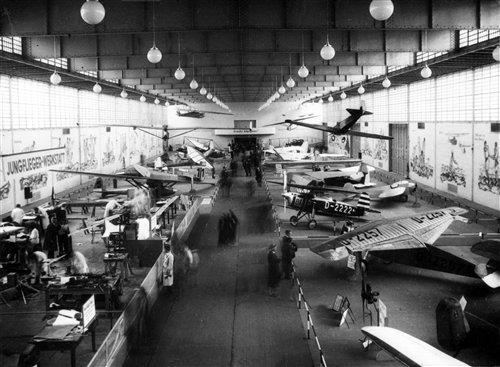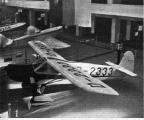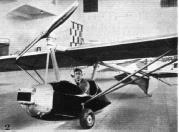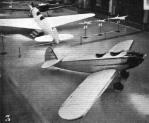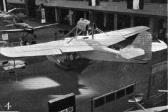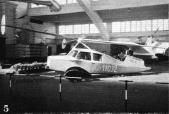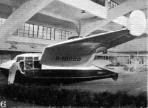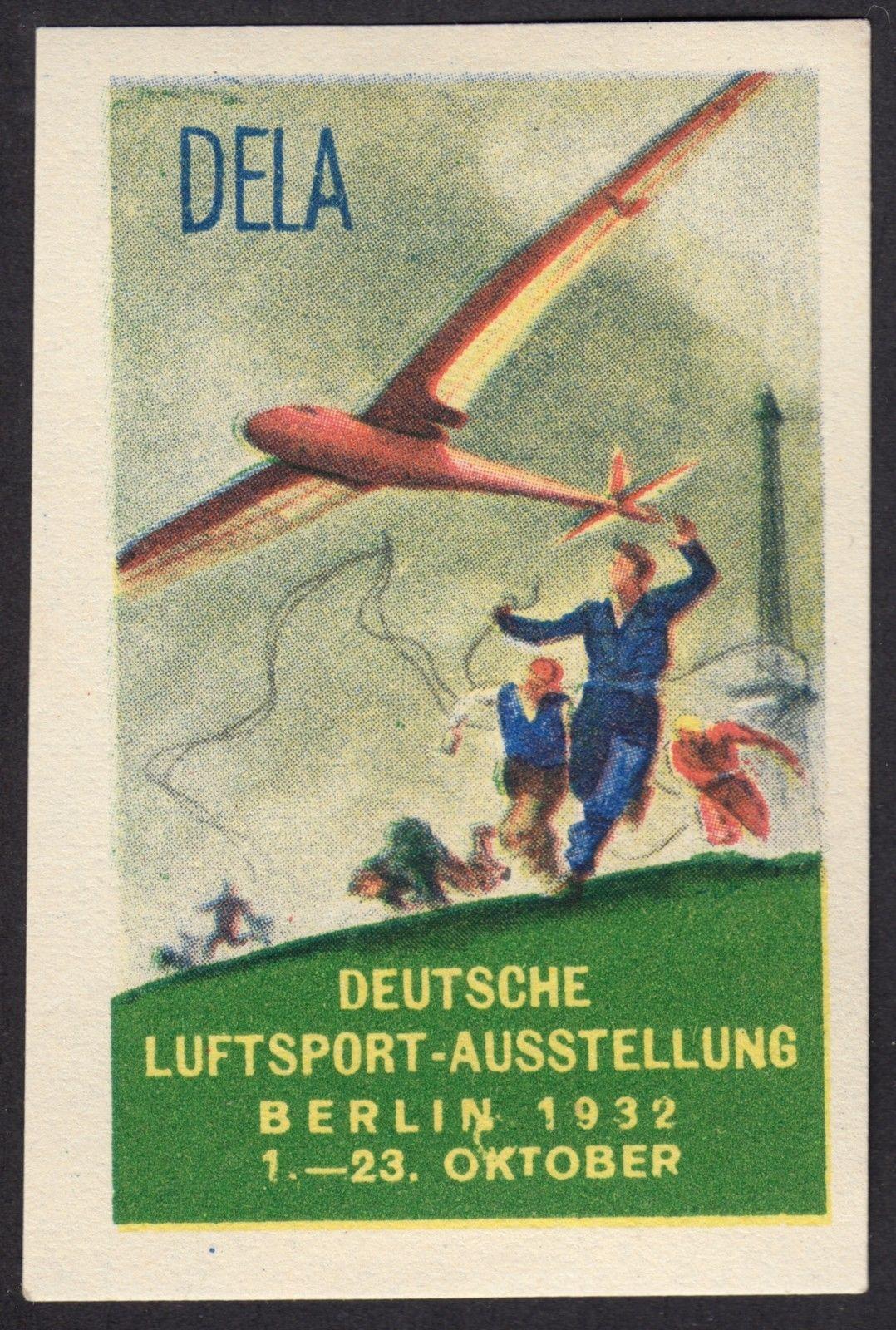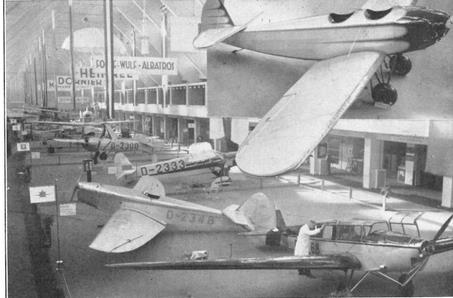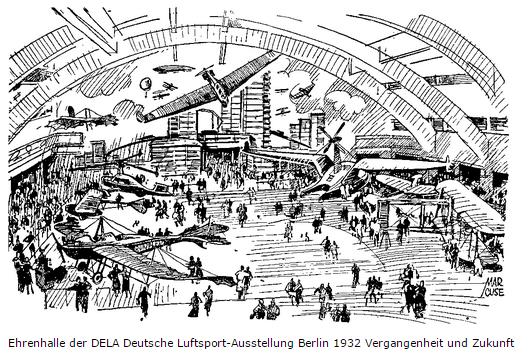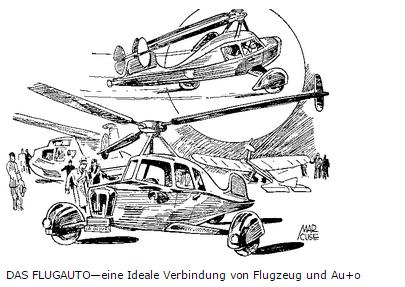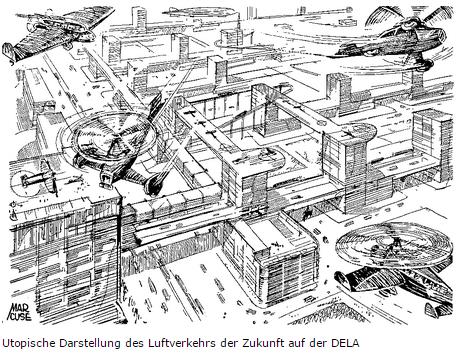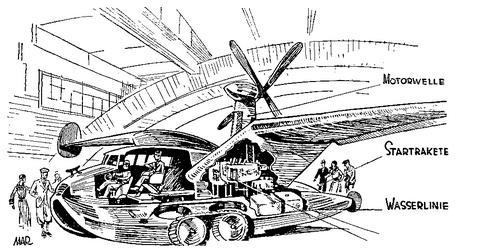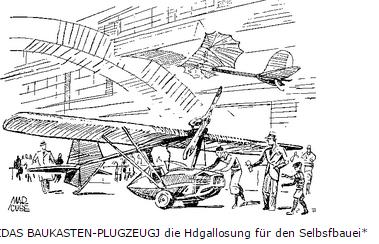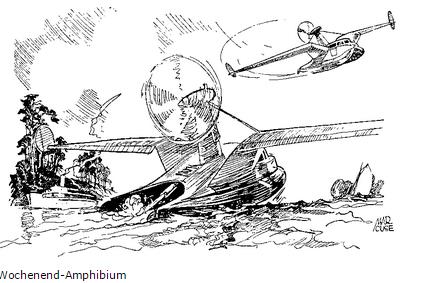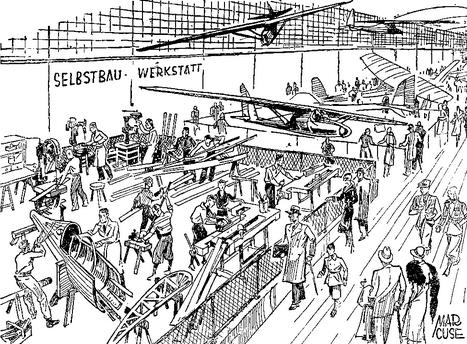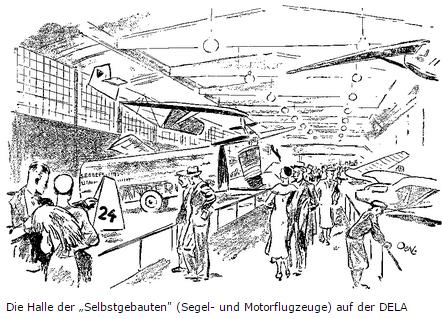1. Focke-Wulf "Falke"
2. ?
3. Messerschmitt M.31 in the background while in the foreground the Fieseler 4
4. Dornier "Libelle"
5. ?
6. The "Weekend Amphibian"
An unusually interesting and instructive aero show was opened at Berlin on October 1 and is to remain open till October 23. It is located in the Berlin exhibition halls surrounding the foot of the big radio tower, and comprises numerous exceedingly well arranged sections giving a very fine survey of the history of flying and the present state of sport flying in Germany. Military and transport flying is excluded from this show, which proposes to appeal solely to the average citizen with a view to fostering active interest in every sphere of civil flying. Entering the first hall one comes into an historic and futuristic section. Bays along the side contain valuable historical material, while the large centre space shows a number of curious machines purporting to give an idea of future development. Several of these machines, such as the one looking like a gliding boat with wings, are actual designs. The machines shown are, however, only full-scale models made of plywood and cardboard (or, as we should call them, " Mock-ups " - E D . ) . In the next section are exhibited a number of industrially-produced light aeroplanes, most of them being wholly new models, to which we will refer later. In this hall also the now available German light-aeroplane engines, Argus, Hirth, Siemens and BMW, are displayed. Following on this comes a section displaying methods of tuition and the equipment of aeroplanes and balloons. Sectional working models of aeroplanes and engines enable even the veriest novice to obtain an inkling of how everything works and how aeroplanes are controlled. The next section displays a number of scale models of aerodromes, and includes apparatus and machines comprising the ground organisation. In a number of bays the results of the various aeroplane competitions held in recent years in Germany are illustrated, showing the actual winning machines, or models of them. From here one enters a long and narrow hall devoted to model aeroplanes.
Numerous German clubs have exhibited the various models with which they were successful in various competitions. Here also a model workshop is shown with boys building model aeroplanes. The next and final hall contains numerous gliders, soarers and motor aeroplanes, built mostly by the various German clubs in their own workshops. The workshop of a Berlin school has been transplanted to this hall, and young men are constantly at work in it building a new large soarer.
Returning to the industrial section, one is struck with the attractive appearance of a four-seater saloon aeroplane publicly shown for the first time by the Klemm Company. It is not a very fast but a very comfortable machine, of
the type one might term a " fly-about " for the family man. Its cabin is spacious and comfortable, with two sets of wicker-work armchairs side by side. Also, the walls are lined by wicker-work, which gives the interior a bright " week-endy " kind of appearance, wholly pleasing. Ample luggage space is provided behind the rear seats. The cabin top and sides are entirely of glass, with sliding side and opening windshield panes. The design of the machine, a low-wing monoplane, is typical of Klemm. It is built entirely of wood, and access to the cabin is attained over the wings, the cabin top being divided longitudinally down the centre and hinged on the front uprights so the two halves can open like a door. In case of emergency, the whole top can be thrown off instantaneously by the operation of a single lever. The span of the wing is 44.3 ft. (13.5 m.), the wing area 224 sq. ft. (20.8 sq. m.), and the length of the machine 28.21 ft.(8.6 m.). The machine can be had fitted optionally with a 150-h.p. Siemens, Argus or 120-h.p. Gipsy engine. Maximum speed with a Siemens is 118 m.p.h., normal flying speed 106 m.p.h., and landing speed 50 m.p.h.
A great centre of attraction is a new small amphibian, which Dornier has developed in all secrecy.
Another very interesting exhibit is that of the new fast Messerschmitt sports machine, which was especially designed for participation in this year's international lightplane competition, but could not be finished in time (the machines entered were withdrawn at the last minute owing to alterations having become necessary). The machine is a low-wing monoplane, with wings of almost symmetrical camber, having slotted flaps and ailerons. The fuselage has a welded steel tube frame, and the wings have a single spar with veneer nose, and the rest fabric covered. The span is 36 ft. (11 m.), the area 47.57 sq. ft. (14.5 sq. m.) and the length of the machine 25.4 ft. (7.75 m.). Fitted with a 130-h.p. Argus engine, the maximum speed is 163 m.p.h. Touring speed with engine 15 per cent, throttled is 140 m.p.h., and the landing speed, with flaps down, as low as 34.1 m.p.h. The two seats are arranged one behind the other, and are covered by a glass hood, which can be opened in various ways and thrown off entirely if necessary.
Two German firms are making a bid for the " popular " market by offering machines at between 6,000 and 7,000 marks, including engines. These are Fieseler and the Gebriider Miiller of Griesheim, who have brought otrt a model called " Haller " after the man who proposed the design of this machine.
The Fieseler is a low-wing monoplane 19 ft. in length with two open cockpits in a fabriccovered steel-tube fuselage. The two wings, which are also fabric covered, are braced by profile wires to the top of the fuselage and the rigid undercarriage. The wheels have no shock absorbers, but they are shod with large size low-pressure tyres. Wing span is 31.16 sq. ft. (9.5 m.) and the area 140 sq. ft. (13 sq. m.). The machine is equipped with a horizontal four-cylinder Argus engine (two cylinders on each side opposed) of 40 h.p. output and weighs 506 lb., this being also the load the machine is capable of carrying. The maximum speed is 90 m.p.h. The G.M.G.-Haller machine looks unusually rugged and heavy, but, in fact, only weighs 660 lb. It is a shoulderwing monoplane with two seats entirely within the wooden fuselage, easy access being vouchsafed by large door-like sliding windows in the sides. N-struts support the wing sections, which have a total span of 36 ft. and an area of 172.23 sq. ft. (16 sq. m.). Total length is 22.31 ft. (6.8 m.) and the maximum speed with a 60-h.p. BMW Xa radial engine having NACA cowling 100 m.p.h. and with the previously mentioned small Argus engine 90 m.p.h. The interior is spacious and well appointed. The wheels are fitted on a single axle suspended in forked struts. It is a simple, straightforward and serviceable design.
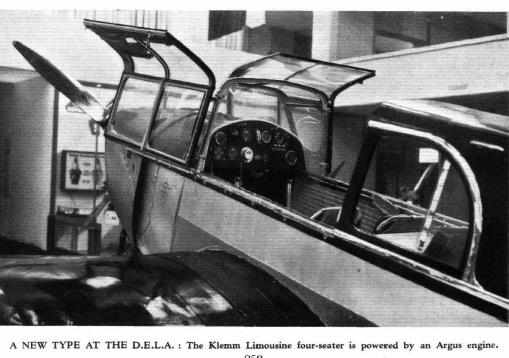
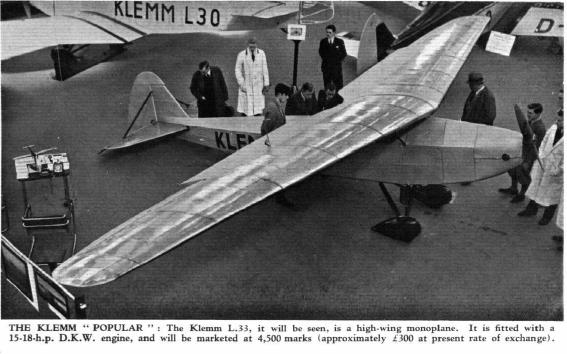
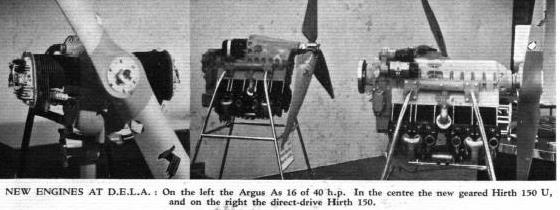
FLIGHT, OCTOBER 13, 1932
THE D.E.L.A. EXHIBITION
By EDWIN P. A. HEINZE
